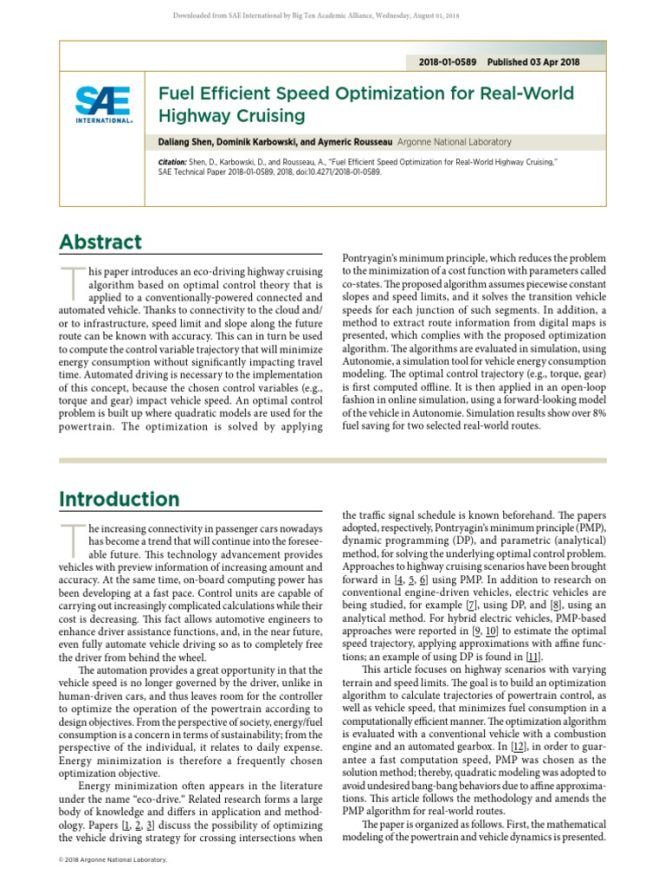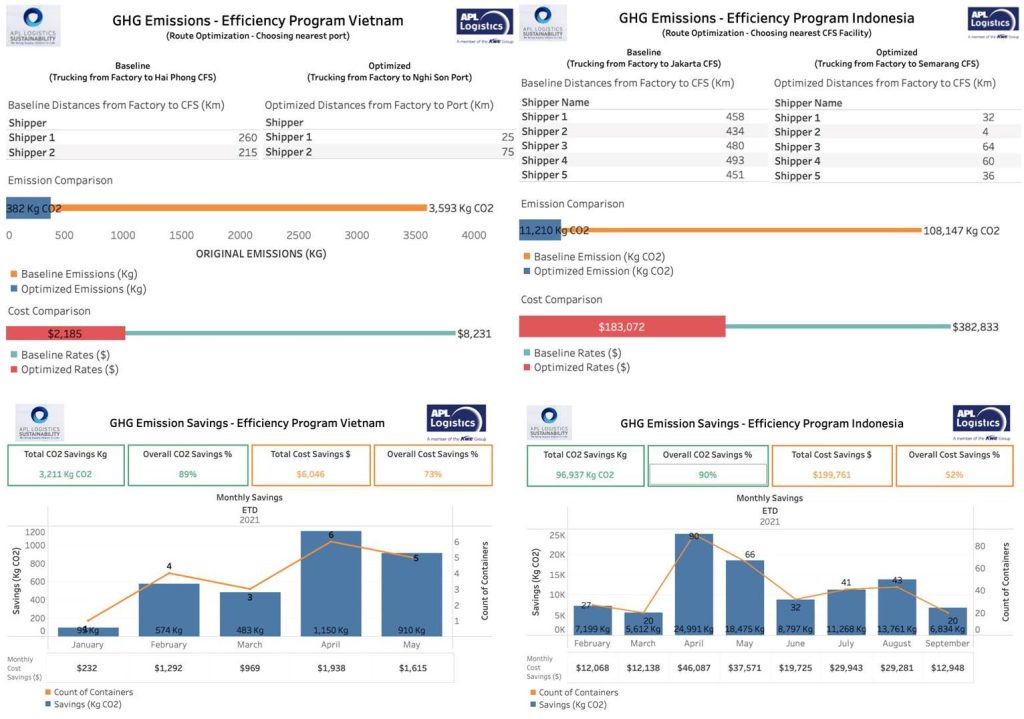

Utilizing route optimization strategies is crucial for businesses and individuals alike seeking to maximize fuel efficiency. Imagine consistently saving money on fuel without sacrificing delivery speed or service quality; this is the power of route optimization. Route optimization goes beyond simple route planning; it involves a multifaceted approach to logistics, leveraging data and technology to identify and eliminate inefficiencies within the entire transportation process. Many companies struggle with high fuel costs and complex logistics, leading to wasted resources and reduced profitability. This article explores the multifaceted strategies of route optimization to improve fuel efficiency, from planning to implementation, and ultimately deliver cost-saving and environmental benefits. We’ll delve into the key elements of route optimization, explore effective technologies, and highlight the practical benefits for both businesses and everyday commuters.
Understanding the Fundamentals of Route Optimization
Defining Route Optimization
Route optimization, in its simplest form, is the process of finding the most efficient route for transporting goods or people. This isn’t just about mapping out a straight line; it involves considering a multitude of variables, including traffic patterns, weather conditions, delivery deadlines, and even driver availability. By incorporating these real-time factors, route optimization seeks to minimize travel time, reduce fuel consumption, and minimize costs overall. Companies often invest in route planning software that leverages GPS and real-time data to offer dynamic route adjustments, resulting in improved efficiency. This is crucial for maximizing the fuel savings from route optimization strategies.
Identifying Inefficiencies in Existing Routes
Many businesses and individuals operate on outdated or poorly designed routes. Identifying these inefficiencies is the first step towards optimization. For instance, unnecessary detours, overlapping routes, or lack of driver communication can significantly increase fuel consumption and delivery times. Examining current delivery routes, analyzing historical data, and considering factors like traffic congestion and parking limitations, is key. Often, the most impactful improvements in fuel efficiency come from a rigorous assessment of existing processes.
The Role of Technology in Route Optimization
Leveraging Route Planning Software
Modern route optimization strategies heavily rely on technology. Route planning software utilizes sophisticated algorithms to calculate optimal routes based on real-time data. These algorithms typically consider factors like distance, traffic conditions, time constraints, and even fuel prices. Imagine a system that automatically recalculates routes if traffic jams suddenly emerge. By leveraging such software, companies can significantly reduce wasted travel time and fuel consumption. Many route planning solutions also include tools for driver communication and feedback, further enhancing optimization.
Real-time Data Integration and Dynamic Adjustments
Real-time data integration is a cornerstone of effective route optimization. Software continuously monitors traffic, road closures, and other dynamic elements that impact travel time. This allows for dynamic adjustments, altering routes in real-time to avoid delays or unexpected disruptions. This agility is crucial for maximizing efficiency, minimizing fuel consumption and ultimately saving money.
Implementing Route Optimization Strategies
Data-Driven Decision Making
Data plays a pivotal role in route optimization. By analyzing historical delivery data, companies can identify patterns and trends that indicate inefficiencies or areas for improvement. This could involve understanding when peak traffic occurs, determining which routes are consistently slow, or identifying which zones see higher fuel consumption rates. Using data-driven insights empowers companies to make informed decisions on route design and scheduling. These actionable insights enhance operational efficiency and minimize wasted resources, optimizing fleet management significantly.
Collaboration and Communication
Effective route optimization isn’t just about software; it also depends on effective communication and collaboration amongst the team. This could involve drivers providing feedback on route challenges, dispatchers making necessary changes, and field managers analyzing the data and providing feedback to optimize further. Improved communication streams can allow for better coordination, reducing errors and improving fuel efficiency.
Measuring and Tracking Results
KPIs for Route Optimization Success
Monitoring key performance indicators (KPIs) is essential for tracking the success of route optimization efforts. Metrics like average delivery time, fuel consumption per delivery, and total route distance traveled can provide a clear picture of the effectiveness of the new route strategies. These KPIs will allow businesses to understand the effectiveness of these strategies and further optimize processes based on observed improvements. By continuously tracking and evaluating these metrics, companies can identify areas for improvement and continuously refine their route optimization strategies for long-term fuel efficiency and economic savings.
Regularly Updating Optimization Algorithms
Modern route optimization algorithms are constantly evolving. The technology behind these platforms is always being updated to remain accurate and reflect current traffic patterns, real-time road conditions, and other relevant factors. Regularly updating these algorithms is critical to ensuring that optimization strategies remain effective over time. Using dynamic route adjustments that accommodate unexpected changes provides for maximized fuel efficiency and minimal operational disruption.
Related Post : Choosing Fuel-Efficient Vehicles for Your Business Needs.
The Benefits of Route Optimization for Fuel Efficiency
Improved Fuel Consumption
One of the most tangible benefits of route optimization is the considerable reduction in fuel consumption. Optimizing routes minimizes mileage and avoids unnecessary detours, leading to lower fuel bills and a positive impact on the environment. Well-optimized routes translate into quantifiable fuel savings for businesses, contributing to significant cost reductions over time. Numerous case studies have proven the effectiveness of route optimization in reducing fuel costs.
Reduced Environmental Impact
Minimizing fuel consumption directly reduces carbon emissions, contributing to a lower environmental impact. The environmental benefits of optimized routes can be significant, helping businesses achieve sustainability goals and contribute to a healthier planet. By improving the operational efficiency of vehicles, businesses can actively participate in preserving the environment.
Example of Route Optimization Implementation
Company X – Logistics Efficiency
Company X, a nationwide shipping company, experienced significant fuel costs. By implementing route optimization software, they identified 15% fuel savings within the first quarter. This software analyzed real-time traffic, and automatically recalculated routes when disruptions occurred, such as road closures or construction zones. With improved fuel efficiency, Company X saw a notable rise in profitability. This illustrates the potential of route optimization in reducing operating costs, optimizing logistical efficiency, and enhancing overall operational efficiency.
Individual Commuter Optimization
Utilizing GPS-based apps that calculate optimized driving routes, a commuter can significantly minimize fuel consumption and unnecessary detours. These solutions not only provide optimized routes, but also provide recommendations on avoiding congested areas, enabling faster commute times and minimized fuel expenses. This shows the impact of route optimization on fuel efficiency even for an individual driver, in comparison to using standard navigation solutions.
Cost Savings and Return on Investment
Quantifying Fuel Savings
The return on investment (ROI) for route optimization is often substantial. Savings can be directly measured through reduced fuel consumption and minimized travel times. Companies frequently see notable reductions in operational costs after implementation. Using historical data and analytics tools, companies can readily quantify potential fuel savings, which provides a powerful metric to show ROI.
Future Trends in Route Optimization
Integrating AI and Machine Learning
Artificial intelligence (AI) and machine learning (ML) are transforming route optimization. These technologies can analyze vast amounts of data to predict traffic patterns and adjust routes in real-time, potentially achieving even greater efficiency. Utilizing these advanced technologies can result in more accurate estimations and potentially more efficient route plans in comparison to standard optimization methods.
In conclusion, optimizing routes for improved fuel efficiency isn’t just about saving money; it’s about sustainability and operational efficiency. By implementing the strategies outlined, businesses and individuals can significantly reduce their carbon footprint while minimizing fuel costs. The key takeaways are the importance of data-driven decision making, leveraging technology for real-time adjustments, and focusing on a holistic approach that considers all factors influencing fuel consumption. Ready to boost your fuel efficiency? Contact us today for a free consultation on how to optimize your routes!